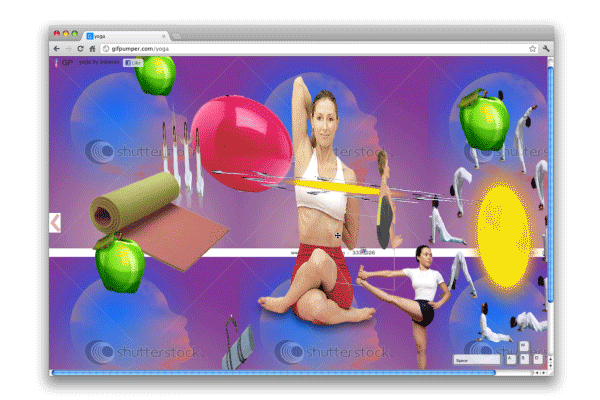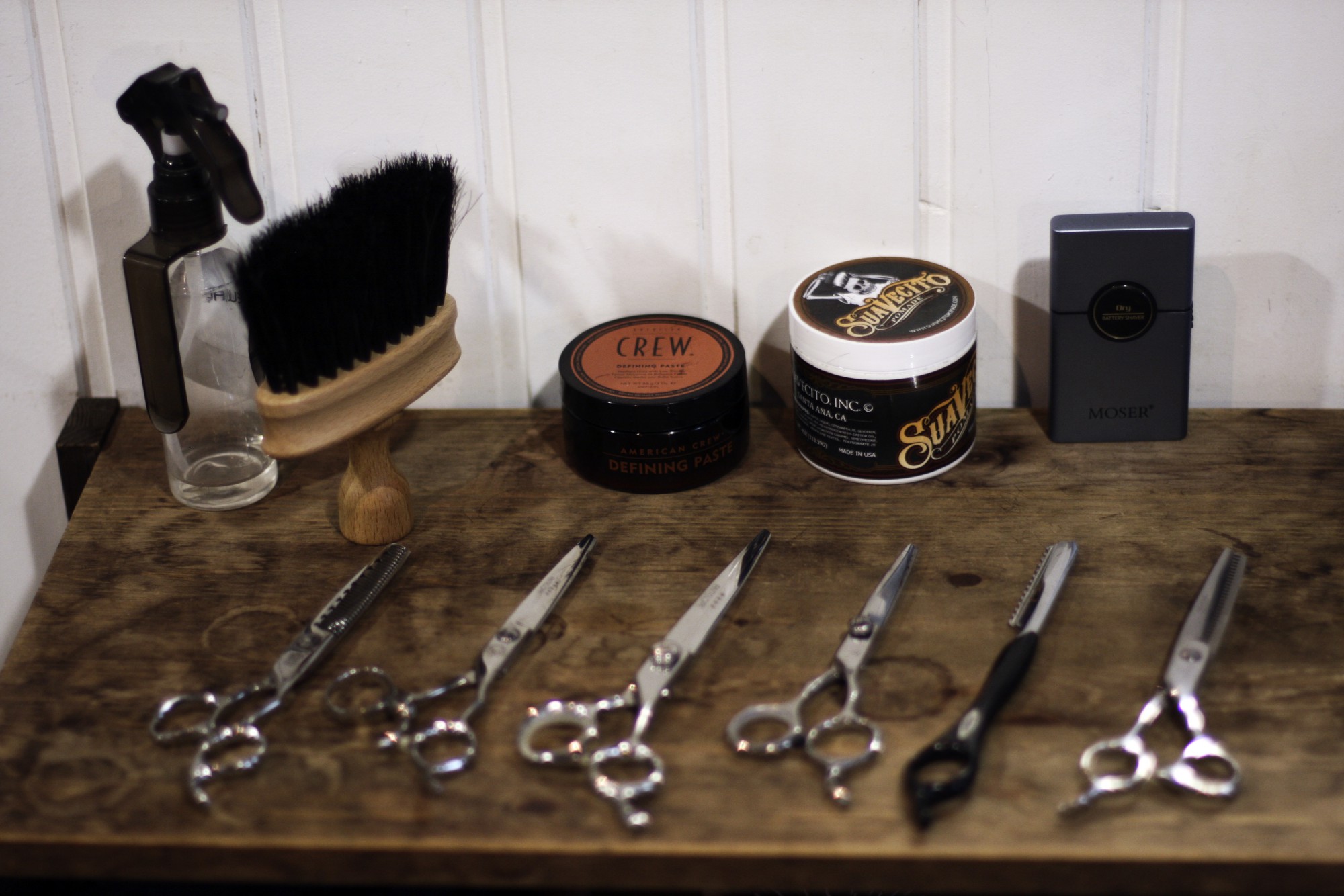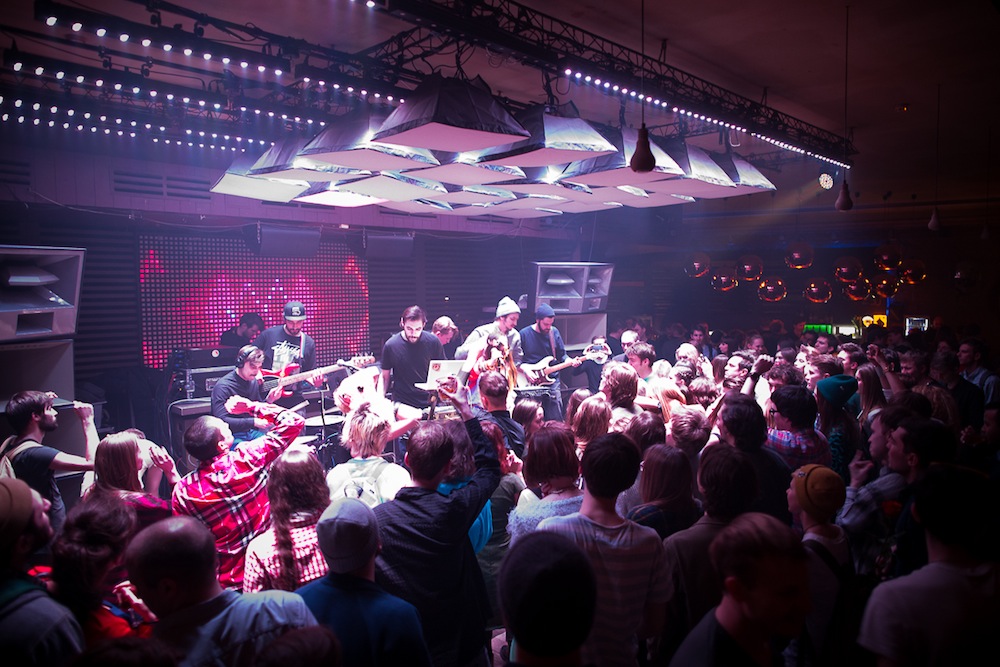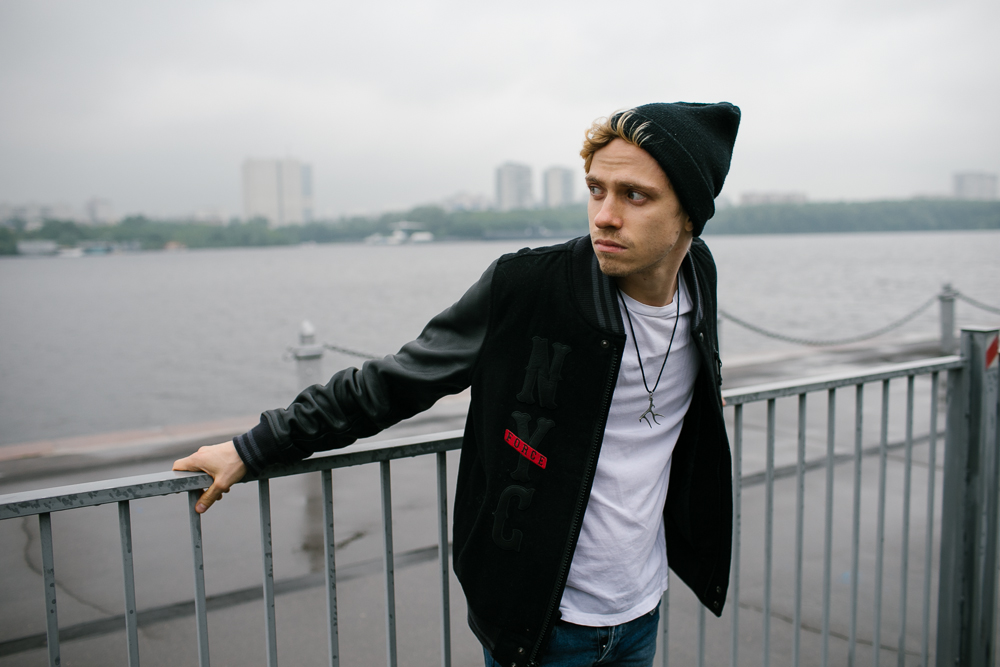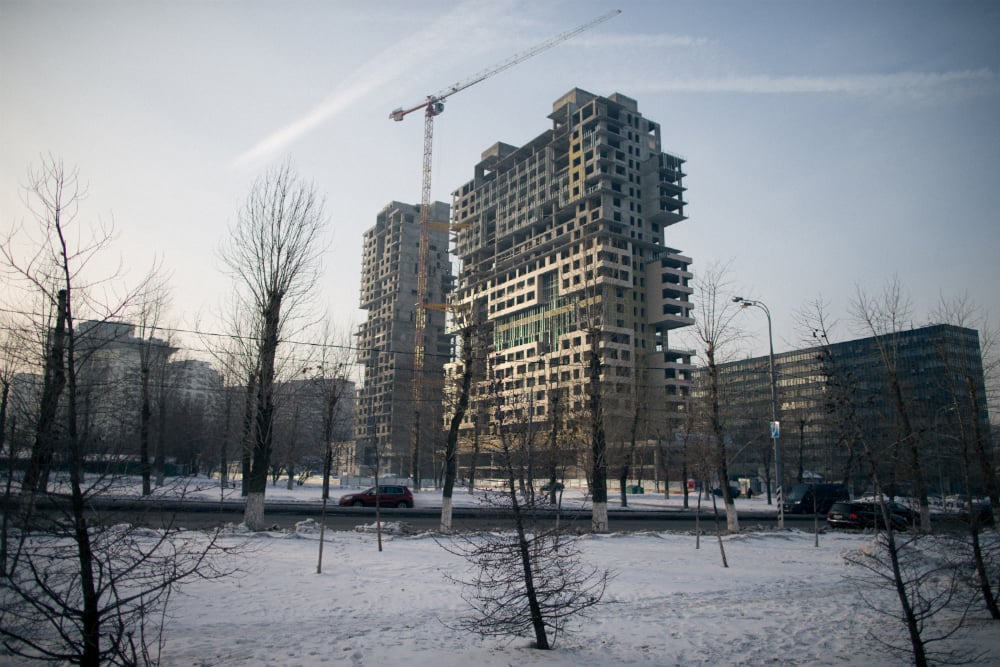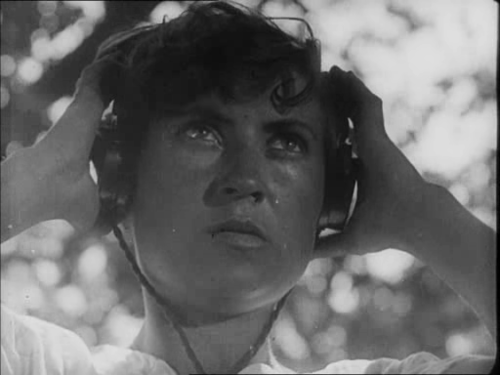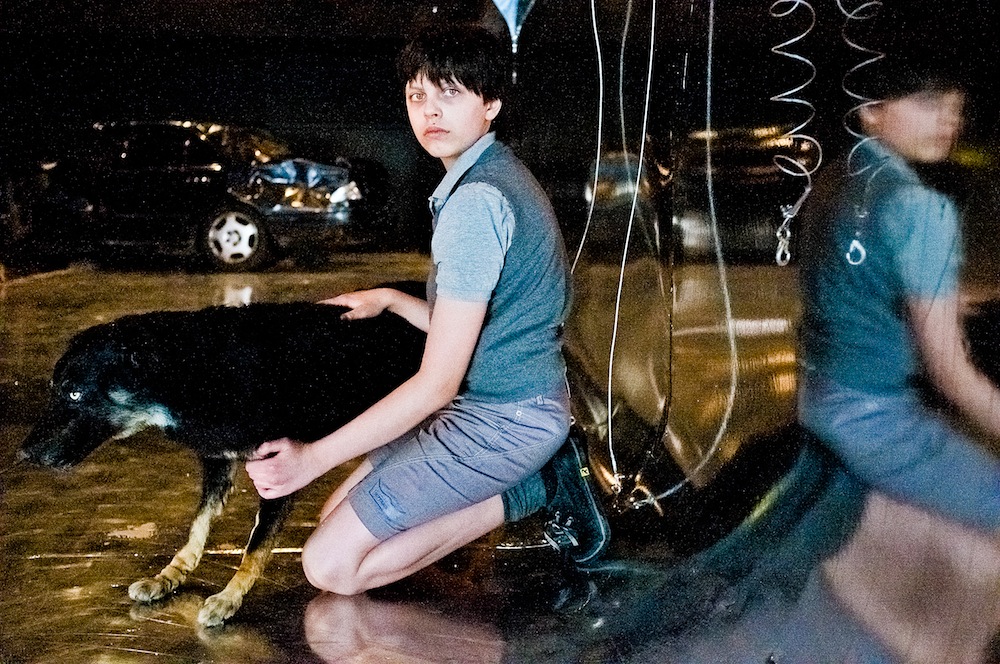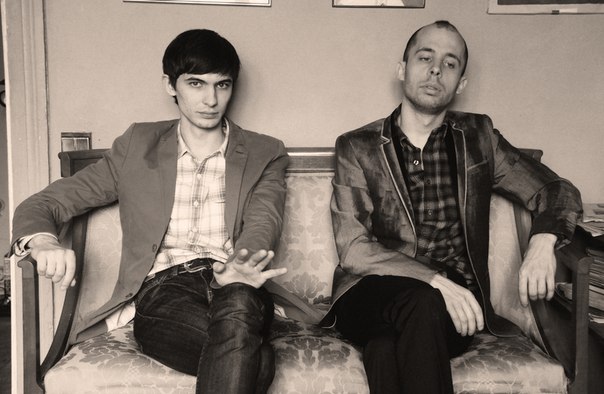Beating a new path: Russian artist Slava Balasanov finds his groove
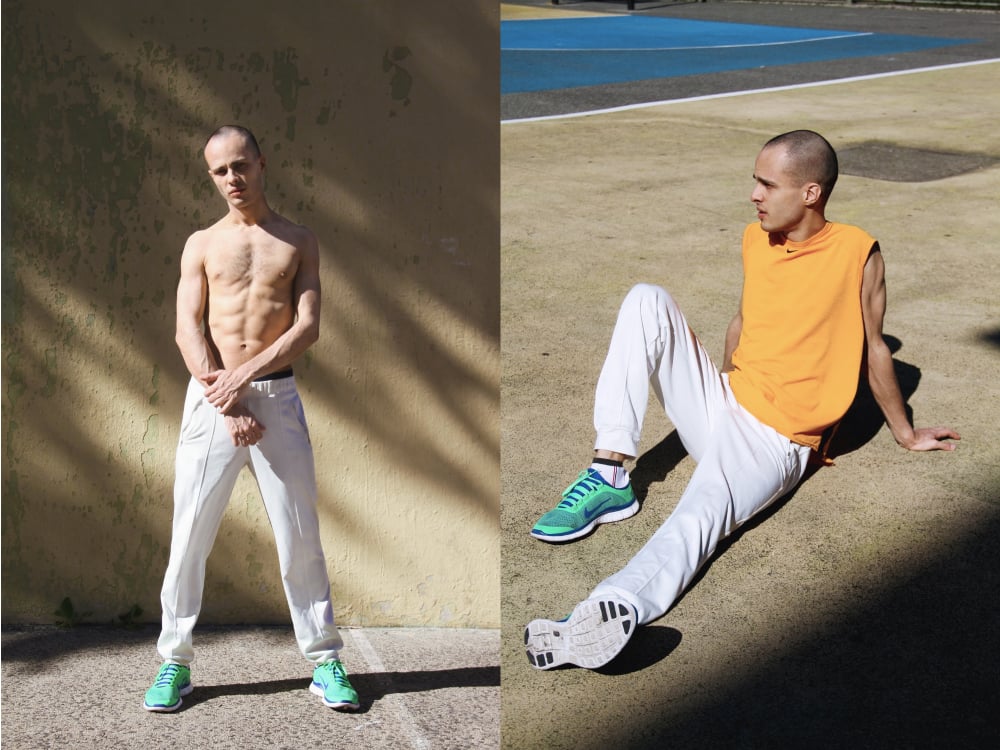
New York-based producer and artist Slava Balasanov is part of a growing scene of creatives to eschew the twee artisanalisation of hipsterdom in favour of mass-market logos and low-brow brands
When I meet Slava Balasanov at Forgetmenot, a bar in Manhattan’s Chinatown best described as surf shack-meets-curio closet, the artist and producer has just returned to the US after spending two and a half months touring Berlin, Moscow, St Petersburg and Sochi playing DJ sets and live shows. Amid the studiously dishevelled downtown crowd — all well-maintained mountain-man beards and tattoo sleeves – sipping watermelon margaritas and Mexican beer, Balasanov stands out: he walks in wearing clean sneakers, athletic shorts and a sleeveless shirt emblazoned with a slightly surreal, sun god sort of image. If the Brooklyn hipster aesthetic is the present, Balasanov’s look is the future.
The producer is an integral member of a growing scene of artists, DJs, musicians, fashion designers and nightlife mavens centered in Bushwick, Brooklyn and downtown Manhattan whose influence in their respective spheres seems poised to overtake that of their hipster contemporaries. Their aesthetic — whether in music, fashion, or art — eschews the twee artisanalisation of their mustachioed peers in favour of a more flamboyant, technology-and-internet-driven style. This new creative class simultaneously endorses completely unique, futuristic ensembles (or art shows or music productions) while embracing — and re-appropriating — mass-market logos and low-brow brands.
“[Balasanov] is a member of a growing scene of artists whose influence in their respective spheres seems poised to overtake that of their hipster contemporaries”
There are few in the scene that embody the intersection of this gestalt in music, art and fashion better than Balasanov. In his work, as in his personal style, kitsch and pop culture can be just as fascinating, if not more so, than luxury and the high-brow. With a penchant for Adidas and an appreciation for the “Chinese knock-off” clothing he comes across during trips to Russia, Balasanov says he likes “the idea of being aware of the cultural significance of clothes. I’m really into playing around with this idea of clothing that’s universal but also super loaded with meaning”. His fashion sense — much like his music and visual art — seems to imbue the low-brow with high-brow (even intellectual) significance.
That there is an intellectual thread running throughout Balasanov’s work makes sense. The son of a financial engineer father and a statistician mother, Balasanov was born in Moscow and moved to Chicago in 1993, when he was 12 years old. He majored in mathematics at the prestigious University of Chicago (whose unofficial motto is “Where Fun Goes to Die”) and played jazz music guitar throughout high school and college. In high school, Balasanov says he’d “wake up to a free jazz [radio] show with really far-out, insane sounds. I got obsessed with that stuff”. “I’d go to jazz jam sessions on the South Side of Chicago at these crazy bars,” he says. “There’d be these old jazz cats, young superstar jazz musicians and nerdy college kids.” On occasion, Balasanov would even work up the courage to join in and play with the house band.

Music producer and artist Slava Balasanov
Balasanov decided at an early age that he wanted to pursue a career as a professional jazz guitarist. But then he graduated college, moved back in with his parents and “had a big musical breakdown.” As he puts it, “I decided that’s not what I wanted to be. Or maybe it wasn’t what I could be.” Abandoning jazz, he began getting into pop, R&B and, later, house music. “I bought some Britney Spears records,” he says with a laugh. “The production on the second record [Oops! I Did It Again] is really, really good.” Inspired by the pop star, he began experimenting with electronic music production of his own. “For the first time, I discovered the impact of dance music. It’s a much more full body experience. More of a transcendental experience maybe.” He adds, “With [dance music], it’s not about you and the performer. It’s more about you and the people around you. There’s still a relationship with the producer but it’s much more honest, in a way. You feel like you have to engage with a live performer but with a DJ, you don’t. You can just walk away and come back and it’s much more of a natural, fluid relationship.”
Collaborating with friends, Balasanov began playing live electronic sets in bars scattered throughout Chicago’s creative neighbourhoods like Wicker Park and Logan Square. But he was itching to leave the Windy City and try someplace new. In 2009, he was accepted into a graduate programme at New York University (NYU) to do a Master’s in Interactive Telecommunications. It was during his time at NYU that Balasanov became seriously interested in visual art, which he says “had been in my head because I’d been thinking about doing video work along with music”. “Doing visual stuff also enabled me to get back into programming and more maths-related things,” he says, “which I had been doing but not in the way I’d wanted to.”
Video for Girl Like Me by Slava Balasanov
Programming, technology and the internet are fundamental to Balasanov’s artwork. “A lot of my art was a response to what was going on in the internet art scene where there’s a nostalgia for things like Myspace,” he says. “More and more, the internet has become this useful thing,” Slava adds, in reference to slick sites like Facebook and Google defining our conceptions of the internet in 2013 as a utilitarian tool rather than a creative one. He says his art reflects instead “a vision of a utopian, beautiful, creative space” — internet 1.0, back in the days of Nineties-era Netscape and chatrooms when the Web was more idiosyncratic and less glossy and less corporate. Like Tumblr, whose users have also taken to this “retro-internet style,” Slava’s work incorporates everything from GIFs of bobbing clip art-style eyeballs and undulating neon blobs to screensaver-style shots of flowing waterfalls. But his work’s connection to the internet and technology is not just surface-deep.
In 2011, Balasanov was given a residency at Eyebeam, an art and technology centre in New York. While there, he produced works like Gifpumper [http://gifpumper.com/], described by Eyebeam’s site as a “collaborative web creation platform” that mixes social media, blogging and virtual reality. To this day, anyone can go on the Gifpumper site and play around with it, creating new 3D landscapes populated with GIFs, images, text, video and music that can be seen by other users simultaneously interacting with the page. Once content has been manipulated, it continues to live on the site until a new user comes along and changes the virtual landscape.
A GIF of Slava Balasanov’s art by the team behind Triangulation Blog
Lately though, Balasanov’s visual art has taken a backseat to his music. His debut LP, Raw Solutions, was released via the Software record label this past April, which also boasts techno producer Huerco S and US singer Autre Ne Veut on its list of artists. Since then, his dance card has been full with performances both in the States and Europe. The tracks on the record are dance music polyglots, incorporating everything from ambient beats and drone to R&B and hip-hop samples and chopped up drum machines. The appearance of murky synths and other sinister-sounding compositions on songs such as Girl Like Me have led some music critics to occasionally attach the label “witch house” to his work. Others have fixated on footwork — the fast-paced, Chicago-spawned sub-genre of house known for rapid syncopated beats, synth toms and vocal samples — when describing his music. For his part, the producer doesn’t much care for these sub-genre labels and prefers to call what he does simply house or dance music.
His single Werk seems directly aligned to the pulsing house music made popular in the Nineties. Spacey, shimmery synths alternate with heavier beats and repetitive, staccato vocal sampling. The accompanying music video shows Balasanov wearing a red-and-white Bosco jacket with “Russia” printed on the back. In the video, he enters an office, greets his assistant who pours him some Slava-branded vodka on ice, and he settles down at the computer to create avatars dressed in sportswear. The clip is a nice amalgam of the DJ’s interests in internet art, computer programming and, of course, his Russian background.
“The other thing about it [Russia] is that there’s so much cultural capital that’s untapped, which is really exciting”
“I hadn’t gone back to Russia in 16 years until a year ago,” says Balasanov. “It was a great experience to be back there. It was totally new and unfamiliar but also totally familiar at the same time.” Since that first return, he’s been back four times. “Going there was a huge influence on me. It was kind of rediscovering my long-forgotten roots,” he says. “The other thing about it, too, is that I feel there’s so much cultural capital that’s untapped, which is really exciting.” It isn’t long before he returns to his love for Adidas tracksuits (or, in some cases, Bosco). “Everyone has Adidas [in Russia]. It’s this universal thing … a very old brand that people identify with,” he says. But, he adds, his Russian hipster friends, who many take their style cues from Brooklyn, Paris or London, often don’t what to make of him when he shows up to a party in a tracksuit, which he wears with a sense of post-irony.
This desire to appear cosmopolitan and western isn’t limited to Moscow hipsters, Balasanov points out. He’s witnessed an aversion to Russian popular culture among the posh, bottle service set as well. “I got booked in St Petersburg to play at this chi-chi club where you’re only allowed to play house music and by house music they meant a very specific type of cheesy, lounge-y, European house music,” he says. “I ran out [of that music] and put on a remix of this Russian pop star Nyusha. Every single bartender turned around and stared at me with a blank face like, ‘What the fuck are you doing?’ And then the manager ran over and was like ‘How can you do this? Everyone’s gonna leave!’” But, he adds, a slight grin of appreciation spreading across his face, “it was actually really good. It was some quality pop.”
